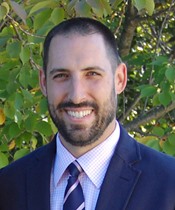Program Information
Multi-Modality 4D Imaging: From Principles to Applications
G Hugo1*, D Low2*, L Ren3*, W Yang4*, (1) Virginia Commonwealth University, Richmond, VA, (2) UCLA, Los Angeles, AA, (3) Duke University Medical Center, Durham, NC, (4) Cedars-Sinai Medical Center, Los Angeles, CA
Presentations
7:30 AM : Clinical impact and applications of 4D imaging - G Hugo, Presenting Author8:00 AM : Respiration-Correlated CT/PET: Principles, Advancements and Clinical Applications - D Low, Presenting Author
8:30 AM : 4D Cone-beam CT: Developments and Applications - L Ren, Presenting Author
9:00 AM : Development of 4D-MRI for Radiation Therapy - W Yang, Presenting Author
MO-AB-702-0 (Monday, July 31, 2017) 7:30 AM - 9:30 AM Room: 702
Motion management is one of the major challenges for radiation therapy. To address this challenge, 4D imaging has been under rapid developments in recent years and has become a vital clinical tool in various imaging modalities, including CT, PET, CBCT and MRI. Compared to conventional 3D imaging, 4D imaging provides unique opportunities to capture the organ motion for target delineation or localization to substantially improve the precision in radiation therapy treatments. Due to the increased complexity in 4D imaging, it is important to understand the mechanism as well as the challenges and pitfalls in 4D imaging in order to use the technology effectively.
This session will first provide a comprehensive review of the current 4D imaging techniques, including the rationale of 4D imaging, the advantages and limitations of each technique, the clinical applications of the techniques, and their clinical impact. Several recent developments in 4D imaging will also be introduced, including: 1). Respiration-correlated CT/PET. A 5D-respiratory motion model has been introduced recently in respiration-correlated CT sorting and reconstruction to minimize the motion artifacts. Its application for CT/PET imaging can produce PET images in the thorax and abdomen with virtually no breathing motion artifacts and accurate attenuation correction. 2). 4D-CBCT. Motion compensated 4D-CBCT has been developed to use deformable registration between phases to minimize the artifacts caused by acquisition under sampling in each phase. Patient prior images, such as planning CT, have also been employed to improve the quality of 4D-CBCT. 3). 4D-MRI. New sorting techniques based on external or internal landmarks have been developed for 4D-MRI. Flexible MR sequence designs allow sampling data in 2D or 3D trajectories that can potentially improve the representation of the motion characteristics while minimizing stitching artifacts. Development in functional 4D-MRI can be useful for MRI guided radiotherapy to assess tumor response during each treatment fraction. Clinical implementation of 4D-MRI faces challenges such as image distortion, scanning volume, and reconstruction time. The current status of these imaging techniques will be reviewed, and their prospective developments and clinical applications will be discussed.
Learning Objectives:
1. Understand the rationale of general 4D imaging techniques, and the clinical significance of performing 4D imaging for radiation therapy treatments.
2. Understand the basic mechanism of 4D imaging acquisition and reconstruction techniques. Learn the advantages and limitations of each technique, and the clinical workflow to implement the techniques.
3. Learn the recent developments in 4D imaging techniques, and understand their potential clinical impact.
Funding Support, Disclosures, and Conflict of Interest: Dr.Hugo receives support from NIH-R01CA166119, Philips Healthcare and Varian Medical Systems, and has licensed technology to Varian Medical Systems. Dr.Low receives research support from Varian and Accuray, and has stock in ViewRay. Dr.Ren receives support from NIH-R01CA184173 and Varian Medical Systems. Dr.Yang receives support from NIH-R03CA173273 and CTSI.
Handouts
- 127-35708-419554-126429.pdf (G Hugo)
- 127-35709-419554-126590.pdf (D Low)
- 127-35710-419554-126862.pdf (L Ren)
- 127-35711-419554-127145.pdf (W Yang)
Contact Email:







